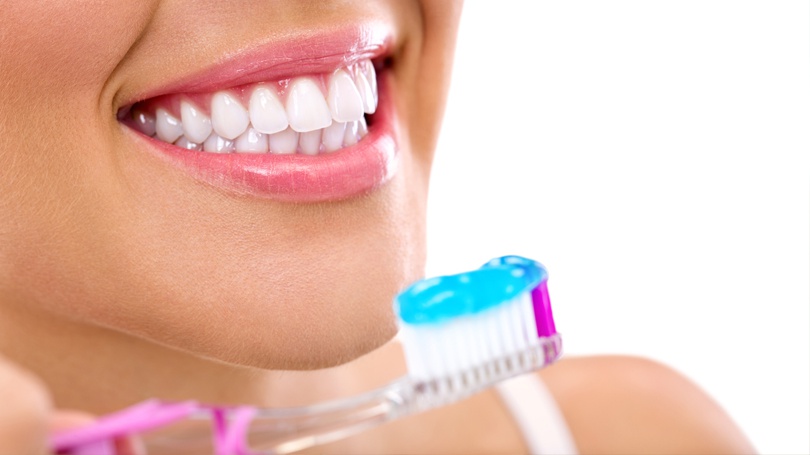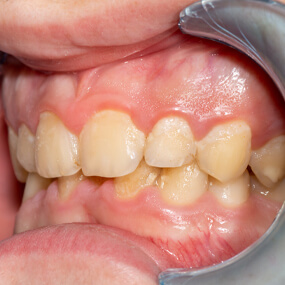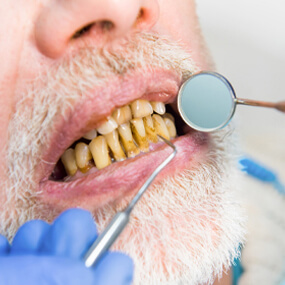6 Habits for Healthy Gums

Enjoying a perfect smile is about more than just how straight and bright your teeth are. Gum health is essential to overall oral health. You can have beautiful, cavity-free teeth and still have periodontal disease. Since gum disease is often painless, many sufferers have no idea anything is even wrong.
What Is Gum Disease?
Plaque not only builds up on and between your teeth but along the gumline and even under the gums. This is where gum disease begins. Plaque is a sticky substance that carries a lot of harmful bacteria. This substance will continue to accumulate and can lead to infections that undermine the gums, teeth, and bone. Eventually, plaque can lead to gum disease, tooth decay, and tooth loss.
The earliest stage of gum disease is gingivitis. The symptoms of gingivitis include gum:
- Redness
- Swelling
- Bleeding
- Tenderness
- Inflammation
The good news is that your bone and soft tissues are not yet affected at this point, which means that gingivitis is reversible. However, left unchecked, gingivitis will eventually evolve into periodontitis, a more advanced kind of gum disease. Periodontitis undermines the bones that secure your teeth, and it can eventually ruin your gums, supporting bones, and connective tissues.
This mild to moderate periodontitis will sooner or later progress to the final and most advanced stage of the disease. During this stage, the bones and fibers that support your teeth are damaged to the point that your bite may change, and some or all of your teeth may need to be extracted.
Indications you may have some form of gum disease include:
- Consistent bad breath
- Frequent bad tastes in the mouth
- Loose or separating permanent teeth
- Receding gums
- Gums that easily bleed
- Gum swelling, redness and/or tenderness
Preventing Gum Disease
You can prevent gum disease, and the American Dental Association (ADA) recommends six habits:
- Daily flossing – The ADA recommends flossing once a day. Flossing dislodges plaque and food particles that you cannot reach when brushing, such as between the teeth and below the gumline. When you floss is not important—morning, afternoon, nighttime. Just develop a routine that works for you and ensures that you do it daily. The bacterial colonies that lead to plaque take about 24 hours to form, so there is no real benefit to flossing more often. Be mindful that over-flossing and bad technique can damage your gums.
- Regular dental cleanings – You can remove most plaque at home, but a regular dental cleaning eliminates any plaque you missed as well as any tartar. Plaque eventually solidifies into tartar, and tartar cannot be removed at home. The ADA recommends a dental checkup twice a year. Your dentist will not only clean your teeth but inspect your gums for indications of gum disease. You may not notice the symptoms yet, but your dentist will recognize them and can treat them before they manifest into a more serious condition. Gingivitis is reversible with proper care at home and in the dental office. Later stages are not reversible but manageable, and depending on your condition, your dentist may recommend more than two visits a year.
- Avoid tobacco products – There are many great reasons not to smoke cigarettes and cigars and not to chew or dip tobacco. Your gum health is among them. In fact, there is a strong correlation between smoking and gum disease. The Centers for Disease Control and Prevention (CDC) warns that smoking diminishes your immune system, which makes it harder to defend against gum infections. Smoking also causes your gums to heal slower or not at all.
- Brush twice daily – The ADA advises brushing twice a day: once after breakfast and again before going to bed. Brushing removes plaque and food particles that are on and between your teeth and gums. You should brush your tongue as well and may want to purchase a tongue scraper for this step. Choose a soft-bristled brush, and change your toothbrush out every three to four months or as soon as it begins fraying. The Mayo Clinic recommends choosing a toothbrush that fits comfortably in your mouth. An electric toothbrush is an excellent investment that can remove more plaque than brushing by hand.
- Brush with fluoride toothpaste – When choosing a toothpaste, ensure that it contains fluoride and features the ADA Seal of Acceptance. The seal should read that the product not only prevents cavities but reduces plaque and gingivitis. Characteristics like color, flavor, teeth whitening, and breath freshening are a matter of preference.
- Rinse with a therapeutic mouthwash – Therapeutic mouthwashes are available over the counter and can reduce gingivitis as well as impede the speed at which plaque solidifies into tartar. Rinsing also removes food particles and other debris but is not an alternative to brushing and flossing.
Keep Your Gums Healthy
Excellent gum health begins at home. But you also need personalized attention from a dentist to ensure that your gums and teeth remain healthy throughout your life. Jeffrey D. Clark, DDS, would like to help you do just that. Dr. Clark and his entire team at Scottsdale Cosmetic Dentistry Excellence will assist you in achieving and maintaining healthy gums. Call us at 480 585 1853 to learn more about how we can help.




